COMPANY PROFILE
Home / Company Profile
Green air International has been established to become a multifaceted company participating in a variety of industries like Information Technology, Pharmaceutical, Telecommunications, and Hospitality etc. Our Specialty is executing turnkey projects in HVAC, Seismic. Firefighting management Systems to promote various products and services through continuous improvement. Green Air International is a
We can handle all the aspects of the project like Planning, Designing, Consultancy and execution to ensure that you get products that suit your needs and services that keep them working in the perfect condition. By taking advantage of our track record and expertise you gain a team of educated and trained people while avoiding expenses due to improper training and substandard installation. We hope each year more customers than ever select Green air International for their needs while reasons for this trend abound, one stands out above the rest – Green air International, keeps the service promise it makes to each and every customer. We continue to grow, winning over more customers almost
OUR SERVICES
HVAC & Industrial
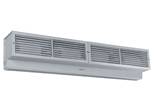 AIR CURTAINS
AIR CURTAINSAir Curtains are installed over operational doors and pass-thru windows providing protection from windborne dust, dirt, fumes, flying
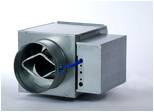 AIR TERMINALS
AIR TERMINALS
Air terminal units are small air handlers designed for local use and may only include an air filter, coil, and blower. These simple terminal units are called “blower coils” or “fan-coil units.” Makeup air units are larger air
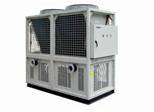 AIR CURTAINS
AIR CURTAINS
Air Curtains are installed over operational doors and pass-thru windows providing protection from windborne dust, dirt, fumes, flying
 AIR-COOLED CHILLERS
AIR-COOLED CHILLERS
Cooling towers are heat removal devices used to transfer processed waste heat to the atmosphere. Cooling towers may either use the evaporation of water to remove processed heat and cool the working fluid to near the wet-bulb air temperature or may rely solely on air. Common applications include cooling the circulating water used in oil refineries, chemical plants, power stations, and building cooling.
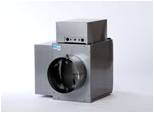 AIR-HANDLING UNITS
AIR-HANDLING UNITS
An air handling unit (AHU), conditions and circulates air as part of a heating, ventilating, and air-conditioning (HVAC) system. A typical air handler is a large metal box containing a blower, heating and/or cooling elements, filter racks or chambers, sound attenuators, and dampers. Air handlers connect to ductwork that distributes the conditioned air throughout the building and returns it to the AHU. AHUs can
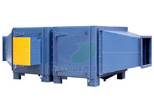 ELECTROSTATIC PRECIPITATORS
ELECTROSTATIC PRECIPITATORS
An electrostatic precipitator (ESP), or electrostatic air cleaner is a particulate collection device that removes particles from a flowing gas (such as air) using the force of an induced electrostatic charge. Electrostatic precipitators are highly efficient filtration devices that minimally impede the flow of gases through the device, and can easily remove fine particulate matter such as dust and smoke from the air stream.
 EXHAUST & SUPPLY FANS
EXHAUST & SUPPLY FANS
Fundamental to HVAC systems. Built-to-suit applications can be supplied in a timely fashion from roof mounted dome fans to jet fans used in roadway tunnels
 EXHAUST CLEANING SYSTEMS
EXHAUST CLEANING SYSTEMS
Waste air purification systems combine photo-oxidation and catalytic oxidation for removal of pollutants, odors
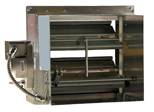 FIRE & SMOKE DAMPERS
FIRE & SMOKE DAMPERS
Dampers are designed to prevent fire and smoke from spreading from a fire source through the ventilation system and into other parts of the building. Depending on their application, fire dampers have different fire-resistance classes (called “fire-duration ratings”) and can be installed in concrete or masonry walls and in lightweight partition walls.
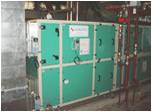 HYGENIC AIR-HANDLING UNITS
HYGENIC AIR-HANDLING UNITS
Hygienic air-handling units provide clean, conditioned air for clean rooms, operating rooms, laboratories
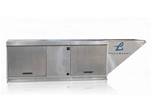 INDUSTRIAL BLOWERS
INDUSTRIAL BLOWERS
Industrial blowers are primarily used to exhaust foul air and replace it with fresh outside air. They are typically used for high volume, high static pressure applications to provide general ventilation in heavy-duty commercial and industrial applications including factories, warehouses, gymnasiums, underground parking garages, etc.
 KITCHEN HOODS
KITCHEN HOODS
An extractor hood (U.K.) or range hood (U.S.), also known as a kitchen hood, stove hood, exhaust hood, cooker hood, extraction hood, cooking canopy, ventilation hood, extractor fan, fume extractor or electric chimney, is a device containing a fan that hangs above the stove or cooktop in the kitchen. It is used to remove airborne grease, combustion products, smoke, odors, heat, and steam from the air by a combination of filtration and evacuation of the air.
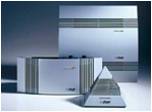 MAKE-UP AIR SYSTEMS
MAKE-UP AIR SYSTEMS
Direct-Fired make-Up Air Systems are widely used in kitchen and food-service operations to replace stale or foul exhaust air with fresh and clean outside air. Models are provided in capacities from 800 to 14,000 CFM with 100% fresh air heated by either natural
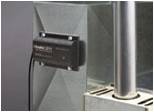 AIR PURIFICATION
AIR PURIFICATION
Commercial grade air purifiers are manufactured as both a small stand-alone unit and as larger units that can be affixed to an air handler unit (AHU) or to an HVAC unit found in the medical, industrial, and commercial industries
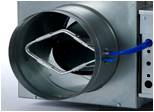 AIR PURIFICATION
AIR PURIFICATION
Commercial grade air purifiers are manufactured as both a small stand-alone unit and as larger units that can be affixed to an air handler unit (AHU) or to an HVAC unit found in the medical, industrial, and commercial industries
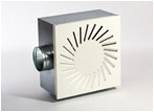 AIR PURIFICATION
AIR PURIFICATION
Commercial grade air purifiers are manufactured as both a small stand-alone unit and as larger units that can be affixed to an air handler unit (AHU) or to an HVAC unit found in the medical, industrial, and commercial industries
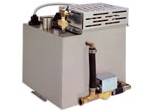 GRILLES, REGISTERS, DIFFUSERS, LOUVERS
GRILLES, REGISTERS, DIFFUSERS, LOUVERS
Grilles, registers, diffusers
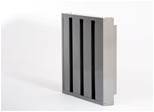 HUMIDIFIERS
HUMIDIFIERS
For buildings with a forced-air furnace, a humidifier may be built right into a furnace. Humidified air can protect wooden objects and other sensitive furnishings which may be damaged by overly-dry air. In colder months, humidifiers provide substantial energy savings as occupants feel warm at a lower temperature with humidified air.
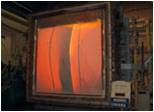 SAND TRAP LOUVERS
SAND TRAP LOUVERS
Sand trap louvers aid in the operation of dampers manually or motor operated from the back of the louver. STLs are designed to separate debris from the air stream. STLs are generally used for ventilation applications and at the inlet duct of air handling units.
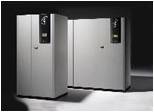 SMOKE AND FIRE CURTAINS
SMOKE AND FIRE CURTAINS
The use of automatic smoke curtains has grown over the last few years as fire engineered solutions have become more complex and architectural demands have placed greater demand on fire strategies. Automatic smoke curtains can be manufactured to provide an unobtrusive and aesthetically neutral solution to compartmentation issues throughout the most complex of buildings.
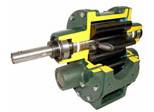 PRECISION AIR CONDITIONING UNITS
PRECISION AIR CONDITIONING UNITS
Precision air conditioning units are designed to run non-stop maintaining
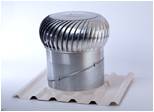 PUMPS
PUMPS
Pumps are used to move gases, liquids, or slurries. A pump displaces a volume by physical or mechanical action. Pumps fall into two major groups: positive displacement and rotodynamic.
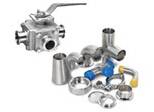 NATURAL VENTILATORS Natural ventilation is the process of supplying and removing air through an indoor space by natural means. There are two types of natural ventilation occurring in buildings:
NATURAL VENTILATORS Natural ventilation is the process of supplying and removing air through an indoor space by natural means. There are two types of natural ventilation occurring in buildings:
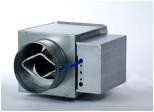 VALVES & FITTINGS Valves may be operated manually, either by a hand wheel, lever or pedal. Valves may also be automatic, driven by changes in pressure, temperature or flow. These changes may act upon a
VALVES & FITTINGS Valves may be operated manually, either by a hand wheel, lever or pedal. Valves may also be automatic, driven by changes in pressure, temperature or flow. These changes may act upon a
Fire Alarm System
FIRE ALARM SYSTEM
An automatic fire alarm system is designed to detect the unwanted presence of fire by monitoring environmental changes associated with combustion. In general, a fire alarm system is classified as either automatically actuated, manually actuated, or both. Automatic fire alarm systems are intended to notify the building occupants to evacuate in the event of a fire or other emergency, report the event to an off-premises location in order to summon emergency
After the fire protection goals are established – usually by referencing the minimum levels of protection mandated by the appropriate model building code, insurance agencies, and other authorities – the fire alarm designer undertakes to detail specific components, arrangements, and interfaces necessary to accomplish these goals. Equipment specifically manufactured for these purposes are selected and standardized installation methods are anticipated during the design. In the United States, NFPA 72, The National Fire Alarm Code is an established and widely used installation standard.
FM200 SYSTEM
1,1,1,2,3,3,3-Heptafluoropropane, also called
HFC-227ea finds use in fire suppression systems in data processing and telecommunication facilities, and in
The HFC-227ea fire suppression agent was the first non-ozone depleting replacement for Halon 1301. In addition, HFC-227ea leaves no residue on valuable equipment after discharge.[2]
HFC-227ea contains no chlorine or bromine atoms, presenting no ozone depletion effect. Its atmospheric lifetime is approximated between 31 and 42 years. It leaves no residue or oily deposits and can be removed by ventilation of the affected space.
As an aerosol propellant, HFC-227ea is used in pharmaceutical metered dose inhalers such as those used for dispensing asthma medication.
At high temperatures,
CCTV System
Closed-circuit television (CCTV) is the use of video cameras to transmit a signal to a specific place, on a limited set of monitors. It differs from broadcast television in that the signal is not openly transmitted, though it may employ point to point (P2P), point to multipoint, or mesh wireless links. Though almost all video cameras fit this definition, the term is most often applied to those used
In industrial plants, CCTV equipment may be used to observe parts of a process from a central control room, for example when the environment is not suitable for humans. CCTV systems may operate continuously or only as required to monitor a particular event. A more advanced form of CCTV, utilizing Digital Video Recorders (DVRs), provides recording for possibly many years, with a variety of quality and performance options and extra features (such as motion-detection and email alerts). More recently, decentralized IP-based CCTV cameras, some equipped with megapixel sensors, support recording directly to network-attached storage devices, or internal flash for completely stand-alone operation.
Surveillance of the public using CCTV is particularly common in many areas around the world including the United Kingdom, where there are reportedly more cameras per person than in any other country in the world. There and elsewhere, its increasing use has triggered a debate about security versus privacy.
ASPIRATION TYPE SMOKE DETECTION (VESDA)
An aspirating smoke detector (ASD), consists of a central detection unit which draws air through a network of pipes to detect smoke.[1] The sampling chamber is based on a nephelometer that is capable of detecting the presence of smoke particles suspended in air by detecting the light scattered by them in the chamber. In most cases aspirating smoke detectors require a fan unit to draw in a representative sample of air from the protected area through its network of pipes, such as is the case for Wagner, Safe Fire Detection’s ProSeries and Xtralis ASD systems.
Aspirating smoke detectors are highly
In 2010, IMS Research named Xtralis the world’s leading supplier of ASD in the fire detection market. According to the report, Xtralis accounted for more than 50 percent of the global ASD market in 2009. Xtralis manufactures both VESDA and ICAM ASDs. Both product lines provide very early warning smoke detection to continuously sample air for even the smallest traces of smoke.
WATER LEAK DETECTION & RODANT REPELLER SYSTEM
A Water detector is a small electronic device that is designed to detect the presence of water and alert humans in time to allow the prevention of water damage. A common design is a small device that lays flat on a floor and relies on the electrical conductivity of water to decrease the resistance across two contacts. A
Water Leak Detection is an expression more commonly used for larger, integrated systems installed in “high-tech” buildings or those containing valuable artifacts, materials or other assets where early notification of a potentially damaging leak would be beneficial.
The Water Leak Detection industry is small and
A leak occurring within a floor void would therefore go unnoticed until the hydrostatic head of pressure meant that the water found its way through to floors below where its dripping through the ceiling would be noted or, and more disconcerting, the water would penetrate the joints and connectors of the power or network cabling and cause system failure from short circui
ELECTRONIC PEST CONTROL
Electronic pest control is the name given to the use of any of the several types of electrically powered devices designed to repel or eliminate pests, usually rodents or insects.
Numerous electronic pest control devices are readily available throughout the world. Hardware stores and garden centers usually stock some sort of electronic device advertised to repel a variety of pests and one can also find them on the internet. Although these devices have been around for at least 20 years, they have only recently become popular and widely advertised, probably due to their environmentally friendly claims.
There is a wide range of opinion about these devices. Some people claim that they work for them, while others claim they are not effective at all. Since these devices are not regulated under the Federal Insecticide, Fungicide and Rodenticide Act (FIFRA) in the United States, the US EPA does not require the same kind of efficacy testing that it does for chemical pesticides.
SPRINKLER SYSTEM
A fire sprinkler system is an active fire protection measure, consisting of a water supply system, providing adequate pressure and
Each closed-head sprinkler is held closed by either a heat-sensitive glass bulb or a two-part metal link held together with fusible alloy. The glass bulb or link applies pressure to a pip cap which acts as a plug which prevents water from flowing until the ambient temperature around the sprinkler reaches the design activation temperature of the individual sprinkler head. In a standard wet-pipe sprinkler system, each sprinkler activates independently when the predetermined heat level is reached. Because of this, the number of sprinklers that operate is limited to only those near the fire (in reality, normally one or two will activate), thereby maximizing the available water pressure over the point of fire origin. This also minimizes the water damage to the building.
A sprinkler activation will do less damage than a fire department hose stream, which
BMS SYSTEM
A Building Management System (BMS) is a computer-based control system installed in buildings that
A BMS is most common in a large building. Its core function is to manage the environment within the building and may control temperature, carbon dioxide levels and humidity within a building. As a core function in most BMS systems, it controls heating and cooling, manages the systems that distribute this air throughout the building (for example by operating fans or opening/closing dampers), and then locally controls the mixture of heating and cooling to achieve the desired room temperature. A secondary function sometimes is to monitor the level of human-generated CO2, mixing in outside air with waste air to increase the amount of oxygen while also
As well as controlling the building’s internal environment, BMS systems are sometimes linked to access control (turnstiles and access doors controlling who is allowed access and egress to the building) or other security systems such as closed-circuit television (CCTV) and motion detectors. Fire alarm systems and elevators are also sometimes linked to a BMS, for example, if a fire is detected then the system could shut off dampers in the ventilation system to stop smoke spreading and send all the elevators to the ground floor and park them to prevent people from using them in the event of a fire.
ELECTRONIC PEST CONTROL
Electronic pest control is the name given to the use of any of the several types of electrically powered devices designed to repel or eliminate pests, usually rodents or insects.
Numerous electronic pest control devices are readily available throughout the world. Hardware stores and garden centers usually stock some sort of electronic device advertised to repel a variety of pests and one can also find them on the internet. Although these devices have been around for at least 20 years, they have only recently become popular and widely advertised, probably due to their environmentally friendly claims.
There is a wide range of opinion about these devices. Some people claim that they work for them, while others claim they are not effective at all. Since these devices are not regulated under the Federal Insecticide, Fungicide and Rodenticide Act (FIFRA) in the United States, the US EPA does not require the same kind of efficacy testing that it does for chemical pesticides.
PUBLIC ADDRESS SYSTEM
A public address system (PA system) is an electronic sound amplification and distribution system with a microphone,
The term is also used for systems which may additionally have a mixing console, and amplifiers and loudspeakers suitable for music as well as
Simple PA systems are often used in small venues such as school auditoriums, churches, and small bars. PA systems with many speakers are widely used to make announcements in public, institutional and commercial buildings and locations.
Sound reinforcement systems and PA systems may use some similar components, but with differing application, although the distinction between the two is not clear-cut. Sound reinforcement systems are for live music or performance, whereas PA systems are primarily for reproduction of speech.In Britain any PA system is sometimes colloquially referred to as a Tannoy, after the company of that name now owned by TC Electronic Group, which supplied a great many of the PA systems used in the past.
Our Products
→ Conditioning System
→ Ventilation System
→ Fire Fighting System
→ Car Park Ventilation
→ Security System
→ I B M S
→ Kitchen Equipment´
Quick Links
» Home
» Company Profile
» Product & Services
» Projects
» Clients
» Contact us
Services
» HVAC & Industrial
» Transportation
» Building Controls
» Renewable Energy
» Manufacturing
Products
» Air-Conditioning System
» Ventilation System
» Security System
» Fire Fighting System
» IBMS
» Kitchen Equipments
Address
Office :
3 Clover Citadel Complex, Wing No. 4, Office No. 414 Wanowrie.
E-mail: info@igaengg.com internationalgreenairengg@gmail.com
Website: www.igaengg.com
